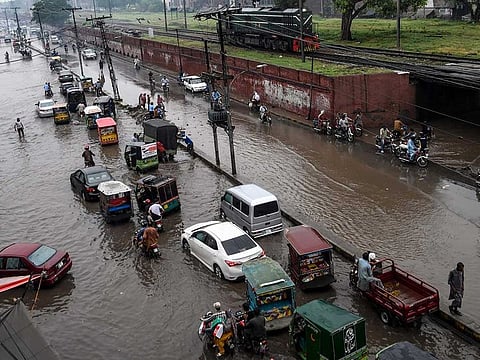Met Office warns of rain, hail and thunderstorms across Pakistan
Flash flood and landslide warnings issued during the new rain spell from March 28 to 31

Islamabad: Spring has arrived, but northern Pakistan continues to experience unpredictable weather with recurring cold waves.
Pakistan’s Met Office has predicted that a westerly wave is likely to bring rains, wind, and thunderstorms across Pakistan, especially in upper and central regions, from March 28 to 31. The Met Office has warned of hailstorms and even isolated “snowfall over the high mountains” along with rain and thunderstorms.
Flash floods and landslides are feared
The Pakistan Meteorological Department (PMD) has warned that the westerly weather system “may cause flash floods” in Quetta, Chaman, Pishin, Barkhan, Musakhel, Jaffarabad, Kohlu, Zhob, Loralai regions of Balochistan during March 28 and 29. The rains may also cause landslides in vulnerable zones in hilly areas of Khyber Pakhtunkhwa, Gilgit-Baltistan, Kashmir, Murree, and Galliyat, the Met Office cautioned. The authorities also warned of urban flooding in Peshawar, Islamabad, Rawalpindi, and Lahore from March 29 to 31.
Officials said that strong winds and hailstorms could also damage weak infrastructure and standing crops, including wheat crops. The PMD has advised farmers to irrigate the crops due to the forecast. Tourists were also advised to remain cautious and plan their travel accordingly during the coming rain spell.
The Met Office has also predicted another westerly wave to enter the western and upper parts of the country on April 1 and is likely to persist over Khyber Pakhtunkhwa, upper Punjab, Islamabad, Kashmir & Gilgit Baltistan till April 4.
Safety alert issued
The Met Office has advised all concerned authorities to remain alert during the forecast period. The National Disaster Management Authority (NDMA) has directed all relevant provincial departments and federal agencies, including the National Highway Authority (NHA) and Frontier Works Organization (FWO), and emergency service Rescue 1122 to take necessary measures to ensure public safety during the upcoming weather changes. The NDMA has provided a set of guidelines for all concerned agencies to follow.
Among these guidelines are steps to inform travellers and local communities in at-risk areas. Local communities in dangerous or hazard-prone sites are to be engaged to enable round-the-clock monitoring and establish feedback mechanisms for early warnings and alerts, according to the advisory.
Other measures include informing farmers regarding impacts on standing crops, as well as coordinating with relevant district and municipal administrations to ensure mitigation measures for flash and urban flooding and securing or removing billboards in view of thunderstorms or high winds, or hailstorms.
Emergency services personnel should be available, and medical resources, including paramedics, equipment, and medicine, should be deployed in regions at risk, the NDMA said.
Sign up for the Daily Briefing
Get the latest news and updates straight to your inbox



